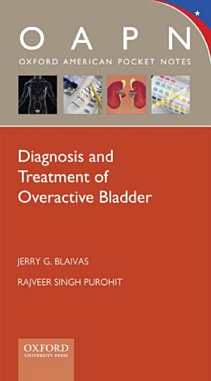Bladder Infections/Cystitis
Cystitis literally means inflammation of the bladder (cyst = bladder, itis = inflammation). Anyone who has ever had cystitis knows exactly what the word means because the tell-tale symptoms are unmistakable – you feel a sudden painful urge to urinate and rush to the bathroom. When you get there only a few painful drops come out; then, you think you’re finished urinating, but as soon as you leave the bathroom, the urge returns and you rush back, only to void another few painful drops.
The classic symptoms of cystitis are pain, urinary frequency and urgency. Sometimes there is discoloration of the urine. Painful urination is called dysuria. It usually starts as a burning sensation at the opening of the urethra and is worst just at the end of urination. As the infection worsens, the entire pelvis and lower abdomen begins to ache and burn, sometimes constantly. Once antibiotic treatment is begun, the symptoms usually begin to subside within a matter of hours, but sometimes it takes a day or more before you are starting to feel better.
Frequency and urgency of urination – at first you may just notice that your are urinating more often (sometimes this is the only symptom). As the infection worsens, you develop urgency and feel the need to rush to the bathroom, but when you get there, only a few drops of urine come out – you get up and leave and a few minutes later, it starts all over again.
Discoloration of the urine – UTI is often accompanied by discoloration of your urine. Sometimes, it is darker than usual; sometimes, it is cloudy. The most alarming discoloration of the urine is bloody urine. Bloody urine is called gross hematuria (heme = blood; uria = urine). Gross means an obvious, large quantity (of blood) , but it is also gross! Gross hematuria can be very frightening, particularly the first time it occurs. You might think you’ll bleed to death; you might think it’s cancer. Actually, it takes only a tiny amount of blood to discolor the urine; just a teaspoon full of blood will color the toilet bowl bright red. In fact, the most common cause of gross hematuria, at all ages, is urinary tract infection. Nevertheless, especially in older people, hematuria can be a warning sign of cancer or kidney stones, and, for that reason it should always be properly evaluated by a physician to be sure that the cause is infection and not something more serious.
Most of the time, cystitis is caused by a bacterial infection. Bladder infection due to bacteria is called bacterial cystitis. It is much more common in women and girls than in men and boys. It is so common in women, and so rarely associated with any serious underlying condition, that it is often considered more of a nuisance than a threat to a woman’s health. In men and boys, on the other hand, bacterial cystitis is rarely a spontaneous event and is usually caused by a more serious underlying condition. In boys the cause is usually a congenital abnormality; in men, it’s usually a prostate problem.
The most common bacteria that cause UTIs are coliform organisms. Coliform bacteria are bacteria that live harmlessly in the intestinal tract where they help to break down the solid waste products of body metabolism. These coliform bacteria can leave the intestinal tract through the anus and get into the urethra where they ascend and cause cystitis. The most common coli form bacteria which causes cystitis is Escherichia coli (E. Coli) which accounts for over 90% of first infections. Other, less common bacteria that cause cystitis are Klebsiella pneumonia, Proteus mirabilis, Proteus vulgaris and Pseudomonas aeruginosa. These organisms are almost never seen in first infections and are usually either acquired during hospitalizations for other problems or the result of chronic or repeated UTIs. The Proteus species is of particular concern because it can cause bladder and kidney stones. For this reason, it is important to completely eradicate Proteus from the urinary tract whenever it is present. This means that, not only must you complete the full course of antibiotics prescribed by your doctor, but you’ll also need to check another urinalysis and culture after you complete treatment to be sure that the Proteus has been eliminated.
How Do Your Treat Cystitis?
There are two goals in the treatment of cystitis – eradicating the bacteria and eliminating the symptoms. Of course if there are no bacteria, the only goal is eliminating the symptoms. Eradicating the bacteria is accomplished through antibiotics. As we discussed above, in most instances, appropriate antibiotic therapy eradicates the bacteria and the symptoms in a matter of 6 – 24 hours. While you are waiting for the antibiotic to work, there are a number of other things that can be done to lessen the symptoms. Firstly, you can drink a lot of fluid. This helps to wash the bacteria out of the bladder and eliminate them from your body. Some people find cranberry juice or yogurt to be particularly helpful. Secondly, a hot bath or heating pad on the lower abdomen to may be soothing and offer relief. Finally, there is a specific pain relieving medication for the bladder called phenazopyridine hydrochloride (Pyridium) that may help to ease the discomfort.
If your symptoms have not subsided within a few days, the chances are that you were either taking the wrong antibiotic or there was not a bacterial infection in the first place. By the time you realize that the symptoms have not gotten better, the results of the urine culture should be available and your doctor can check the sensitivities and start you on an appropriate antibiotic if you were not taking the right one.
If the culture was negative there are a number of possibilities. You might have an infection with an organism that did not grow on the culture plate for one reason or another. The most common reason is that you took an antibiotic before you gave the urine specimen. When you do this, the antibiotic gets into the urine and prevents the bacteria from growing on the culture plate. Even if the original culture was negative, it’s OK for your doctor to try another antibiotic and see if that helps. If a second antibiotic doesn’t help, though, it’s time for a thorough evaluation to determine the cause of your symptoms. This evaluation should include a voiding diary, urodynamics, voiding cystourethrography or ultrasound of the bladder and urethra and cystoscopy.
Preventing Cystitis
After a first episode of cystitis, few preventive measures are necessary because most of the time you won’t get another infection for a long time. There is, however, one major measure that you should take, to avoid infection. Drink lots of fluid. It is good for preventing and treating infections and it is good for preventing and treating kidney stones. But it is important to remember that the more you drink, the more you urinate. If frequency of urination is a problem to you, you’d best discuss how much you should drink with your doctor.
What you drink might also make a difference. Cranberry juice really does seem to offer some protective effect, but most of the other folklore myths need to be checked out for each person. For some people caffeine in coffee, tea and soft drinks causes symptoms and seems to promote infection. For others these have no harmful effect. Spicy foods, acidic foods, alcohol, too much sex, too little sex, and different sexual positions can all cause problems in some people, but not in others. Therefore, we think it’s important to avoid taking general advice and general dietary instructions. Rather, become your own medical detective, possibly with the help of a behavioral therapist, physician or dietician. Change your diet by one item at a time for a few weeks at a time and see if that makes a difference.
If you have recurrent infections, antibiotics taken prophylactically may be useful. If the UTIs occur after intercourse then an antibiotic such as macrobid (nitrofurantoin) taken right before or after sex may decrease your chance of getting an infection. Another option is to take a low dose antibiotic periodically (e.g twice weekly). A third option is to try what is called patient directed antibiotics where you are given an antibiotic and urine culture container beforehand. When you feel an infection coming on you obtain a urine specimen and start the antibiotic right away. This approach minimizes the discomfort from the infections while still giving information about what bacteria caused it in the first place.
Why Choose a Uro Center Urologist in New York?
The urologists at the Uro Center in New York are experts in their field, bringing academic and research based innovation to the clinical forefront. Our urology team specializes in areas of treatment such as: robotic surgery, reconstructive urology, men’s health & infertility, kidney stones, urologic oncology, penile implant surgery, urethral stricture, BPH, Urinary incontinence treatment, Mesh complications, Enlarged prostate treatment, Urodynamics, vesicovaginal fistula and female incontinence in New York.
Request an Appointment











